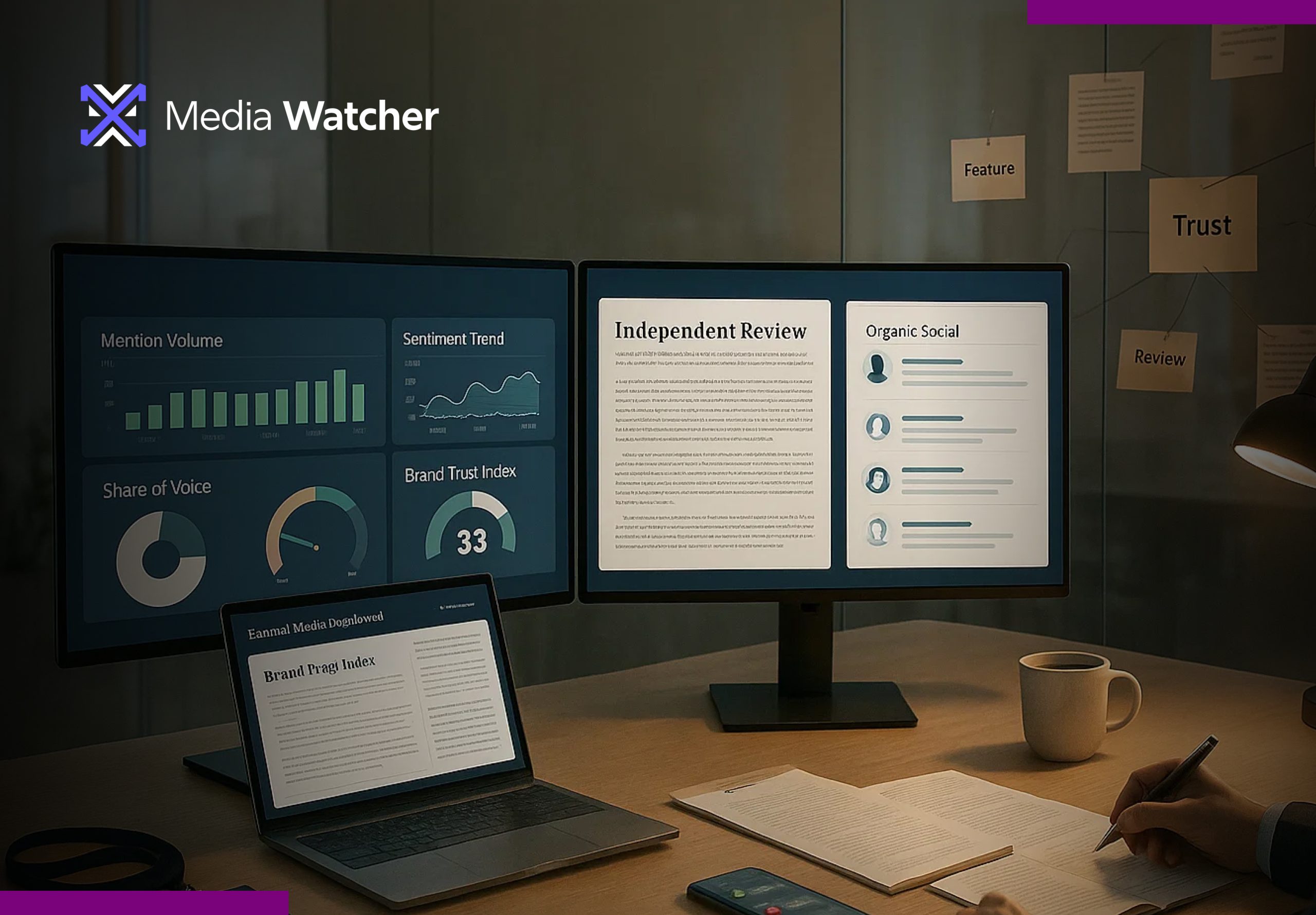The world of international relations has entered an era where a single tweet can ignite a global crisis, and a viral video can become a trigger to reshape foreign policy. Diplomats and IR professionals face an overwhelming digital deluge today.
This is in the form of news, social media posts, and propaganda that comes at us at lightning speed.
In fact, the World Economic Forum recently declared ‘misinformation’ and ‘disinformation’ to be the world’s top global risk in the immediate term.
Misinformation is not a distant and hypothetical threat anymore; it is the reality. While every sector has to deal with the misinformation menace in its capacity, international relationships teams of the states require media monitoring to counter this threat with efficiency.
IR teams deal with daily issues, and to deal with this proactively, they utilize IR media monitoring. From embassies monitoring breaking news 24/7, to foreign ministries responding to Twitter storms, staying ahead of the international news does become a matter of national security.
One of the pressing questions that often strikes the mind is how one can possibly track everything, distinguish fact from fake, and respond before damage to diplomatic efforts is done.
Diplomacy in an Age of Information Overload
For centuries, diplomacy used to be a quiet affair, all about formal statements and behind-closed-doors negotiations. However, due to the evolution of the internet, it’s all about real-time transparency and instant public access to the opinions of state leaders and foreign representatives.
Government statements are often conveyed through Twitter before press conferences, and community sentiment abroad can shift rapidly due to a viral post on Facebook or TikTok about the homeland.
During the major worldwide events, an immense amount of information is shared very quickly. Millions of social media messages and new stories circulate every hour.
While this large amount of data contains valuable insights, it also carries the risk of dangerous misinformation. Moreover, in today’s media ecosystem, propaganda isn’t just dropped as leaflets; it spreads widely through bots, fake accounts, and biased outlets on a much larger scale than ever before.
The 2024 World Economic Forum report makes it clear: digital disinformation is a geopolitical risk just like economic instability or military conflict.
Let’s put that into perspective.
The India-Canada Diplomatic Fallout (2023 – 2024)
In the last India-Canada diplomatic row, Canada accused India of involvement in the killing of Sikh separatist leader Hardeep Singh Nijjar. The response? A media war on both sides.
What was the Issue?
Canada leaned heavily into narratives around human rights and foreign interference, and India hit back. It framed the issue through the lens of sovereignty and anti-terrorism, positioning Nijjar as a Khalistani extremist.
The Extreme Results
The India-Canada diplomatic fallout resulted in an explosive, fast-moving diplomatic clash that played out across press statements, primetime news, and social media buzz with millions of posts.
The hashtag #Khalistan trended globally. Videos circulating, some real and some manipulated, spread through diaspora groups. Also, the accusations, defenses, and conspiracy theories blurred into a multiple, chaotic narrative.
The entire scenario affected public sentiment across borders. Indian diaspora communities in the UK, US, and Australia became amplifiers of local sentiment.
This is one of the examples of how countries may have to go through a cold period in diplomatic relations. Then they have to formulate a strategy to present their case to the international community better.
However, they may first need to know how they are being perceived in relation to this particular event or how the international community is talking about their narrative. This may need an unbiased and structured analysis of opinions on social media.

Analyze Diplomat’s Dilemma in International Relations: Core Challenges
Let’s break this down. In cross-border media analysis, the following challenges keep recurring:
For Embassies
Embassies are no longer just administrative outposts; instead, it is important for them to be media observatories. For them, one of the challenges is that they need to monitor how the local press portrays events in their home country.
What are local citizens saying on social media? Moreover, is their ambassadors’ outreach resonating with the public?
An example of this includes the 2018 event, where the German ambassador to Pakistan gained widespread appreciation for his cultural engagement. It included riding rickshaws, praising truck art, and attending local festivals. But how did that translate in the media?
A PR success like this isn’t a guess. It’s measurable if you have a system to track sentiment, media mentions, and narrative trends. Without it, you’re flying blind. But with it, you’re guiding strategy with real insight.
For States
One of the significant concerns of nations is that they need to know how their policies are perceived by foreign media. What narratives are gaining traction internationally, and how are opposition leaders in other countries framing their actions?
Let’s say your government signs a major trade deal. Great news, right? But what if the media in your partner country frames it as neocolonialism? What if local politicians spin it for their election campaigns?
These narratives affect the investment, public support, and international collaboration.
For Think Tanks and Academics
Think tanks and researchers often need to analyze how geopolitical events are reported across borders while identifying emerging trends in public perception.
Each of these challenges has the power to derail even the most carefully orchestrated diplomacy. So what’s the fix?
What if Media Watcher Were the Source of International Media Monitoring?

Imagine an alternative scenario: Media Watcher is on the scene. As the conflict unfolds, IR teams have Media Watcher’s platform for social listening. Alerts start coming in within minutes of the first breaking news – the tool automatically pulls in reports from over a bulk of sources in 80+ languages across 235 countries.
Government social media posts, local news outlets, international cable networks, and influential blogs are all captured in one feed.
Crucially, Media Watcher’s international news monitoring isn’t just dumping raw data; it’s about filtering the context and then analyzing it.
Within moments, social media monitoring clears that a narrative is blaming one side of the story with extremely negative sentiment. Armed with this knowledge, diplomats advise their leaders to issue a cautious statement expressing concern and calling for verification, rather than a premature condemnation.

As a result, this enables the government’s communications team to proactively counter those falsehoods in their press briefing, using facts to get ahead of the misinformation.
With comprehensive international media monitoring services, what was chaos becomes something closer to clarity. By seeing the whole picture in real-time, IR professionals can make better decisions under pressure, considering the content, sentiment, and source credibility.
Therefore, the difference between being reactive and proactive often comes down to whether you have the right insights at the right time.
Stay Ahead of the Diplomacy in IR with Media Watcher’s Media Monitoring
In the high-stakes domain of international relations, information is power, but only if you can harness it. Instead of drowning in data and analyzing every news, every tweet, every social media post, you sail on it, navigating confidently with a real-time map of the media terrain.
Whether you’re a diplomat managing a fast-moving crisis, a strategic communications director crafting your country’s image abroad, an NGO analyst tracking global discourse on a humanitarian issue, or a think tank tracking international reaction to a country’s trade policy, Media Watcher equips you to get the true picture of a matter.
Moreover, it also empowers informed decision-making by giving an in-depth overview of how the public in different countries talks about a policy rollout or a new law in your country.
Which aspect of your nation is liked by other nations that matters for your future trade objectives? What word of mouth about a key political leader, or public figure in your country, is misrepresenting your state or not helping in building a true image of the country?
It’s time to shift from a reactive to a proactive approach. Media Watcher’s real -time media monitoring provides you with the insight and confidence to act quickly, decisively, and correctly, even when the information landscape is at its most chaotic.
After all, in modern diplomacy, knowledge is not just power; it’s a tool for exerting better influence. Don’t settle for catching up. Contact Media Watcher or visit our website to book a demo.




